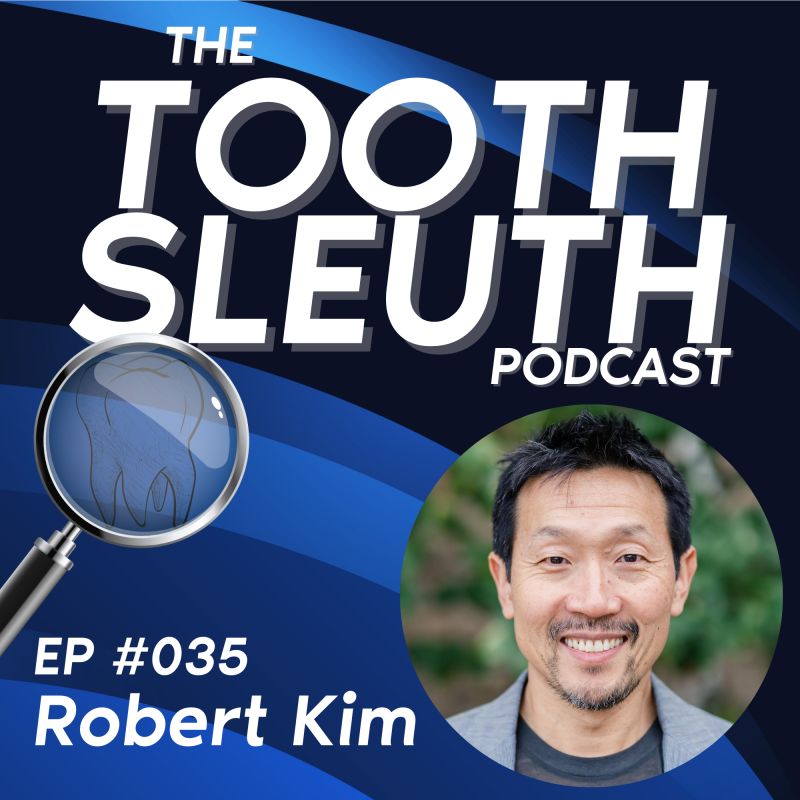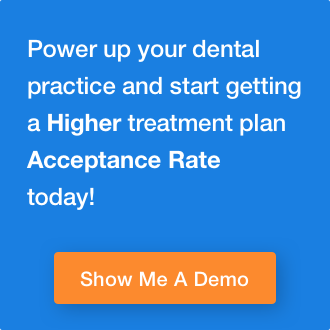29 Nov

Greg Essenmacher, host of The Tooth Sleuth Podcast sat down with Zuub Co-Founder and Chief Business Officer, Robert Kim, to discuss Zuub’s positive impact on the dental industry.
Hear insights on Zuub’s Insurance Verification, leveraging technology to enhance the patient experience, and streamlining practice processes. Additionally, Rob and Greg discuss Zuub’s pipeline management post-consult, and how it’s a great tool to increase revenue with automated levers to free up bandwidth for staff! Tune in to better understand the dynamic intersection between technology and dental healthcare.
Listen To The Tooth Sleuth Podcast Episode Here
Take Aways
- Zuub's Unique Automated Insurance Verification
- Case Acceptance Through Digital Treatment Plans
- Online Payments & A/R
- Insight into The Dental Insurance Industry
- Enhancing The Patient Experience
- Revenue Cycle Management
- Overview of Zuub
The Tooth Sleuth Podcast
Greg
Welcome to the Tooth Sleuth Podcast all about the business of dentistry. I’m Greg Essenmocker your host and I’m honored you’ve chosen to spend time with us as I speak with industry leaders on the dental landscape from their perspective. On today’s episode, I’m excited to welcome Robert Kim. Rob is a startup and technology leader with 20-plus years of experience leading product teams and organizations. He’s one of the co-founders at Zuub and is responsible for leading all the client-facing departments, including sales, customer service, and implementations.
Prior to Zuub, Rob was part of the founding leadership team at Bridge, which was acquired by Catalytics for approximately $400 million when Rob isn’t helping to build Zuub he loves traveling with and spending time with his wife, two daughters, and dog and has the goal of visiting every continent before his daughter’s leave for college. All right, welcome, Rob. How are you, man?
Rob
I’m doing well. Thanks for having me, Greg.
Rob
So Zuub is a Revenue Cycle Management Automation Platform. And that’s, you know, if we were to actually create another acronym, RCM automation, you can throw an A at the end, what does that really mean? What Zuub was designed to do was really help practices focus on what they do best and not on the minutiae of the busy work that is required, but not necessarily productive towards that towards the end goal really servicing their patients. So where we focus our efforts today are on the case acceptance, as well as on insurance verifications and automating that process in addition to streamlining and automating the AR and collections process on the payment side of things.
Greg
Nice, it’s because there are really three avenues and I love it and I when I told you I was gonna pepper a question I did my homework and so the automated insurance verification market, it’s busy, right? There’s a few players in there. So you know, what is it that you’re doing that’s different from others in that space? Right? Because there are others in that space?
Rob
So I think I’m, I’m gonna have to rewind history a little bit and put a little bit of context that now, in terms of insurance verifications, it was an arena that we walked into about four years ago, and thought, you know what this is, this should be really easy. All these insurance companies have all of their information online, or there should be some online equivalent that they can get. People should be able to get access to it, we found out that there are some great resources in the dental exchanges that offer insurance verification information. So we didn’t actually what a lot of other companies are doing today and exploring, and that’s plugging in a lot of the dental exchanges and thinking, that’s it. We’ve got insurance verifications done, check that box and move on. The reality is that’s not the case.
The data that the exchanges can provide might work for certain use cases and niche cases, but not for the the overall use cases that most practices have. The amount of data that a payer might provide for an exchange through their EDI channel can be anything from hundreds of codes, with or without history with or without frequency, or just a check-the-box eligibility of yes, this patient is currently a member of this plan. But that’s about it. Now, in terms of is there any rhyme or reason? There is not. And that’s the landscape and the reality of insurance today, which is one of the reasons why we decided many years ago that this is a big enough problem that we’re going to focus 100% of our efforts on solving it.
Greg
I love that. So tell me this and this is always made me scratch my head. And I know probably somebody’s listening in the audience because they love to interact on social media with me. And they’re gonna be like, That’s a dumb question, Greg. But that’s okay. I love them all. Anyway, so why is it that insurance companies just don’t make it easier to get this data that you’re talking about? Right? I mean, it’s out there, right, you know, make the platform, make the tunnel, make the bridge, plug it in, move on, because they’re spending tons of money, dental practices are spending tons of money, and everybody’s pulling their hair out. And they’re pretty much spending time on the phone. Right? Yeah, I mean, at least from what I know, I’m not in the GP side of the business. I’m in the full arch lane. So I see it happening all the time. I hear the frustrations all the time. And I see tons of opportunity because that’s why companies are coming up with this solution in it. So what’s the deal?
Rob
Great question. One of the reasons is that, let’s be honest, the insurance companies, they’re not technology companies. And in order for them to be able to invest in the resources that they need, in order to develop this properly for other parties, like practice management systems, or third parties, such as Zuub to be able to effectively pull this data. It’s not necessarily part of their DNA. I think that’s one of the hurdles that a lot of insurance companies are facing today. The second is there could be a potential misalignment in incentives. I’m not going to say that every insurance company is is in that along that same vein, but if you think about the cycle there, if it’s more difficult to get that data, then that may or may not result in more complete claims, which may or may not result in claims being paid out at their at whatever the full rate might be.
Now, not saying that there’s anything nefarious going on there, but to say that the inefficiencies lend a little bit to the bottom line of insurance companies. That said, there are a number of insurance companies and we at Zuub we’re working directly with several of them that are looking at this more from the perspective of Hold on a second. We, our providers are up in arms, they’re angry, but at the same time we get a direct benefit if we could somehow shuttle some of this phone traffic away from these call centers, then we can save money, we’ve been insurance companies and the providers will benefit as well. So we are working with a number of those progressive insurance companies that have that mindset. So there’s some progress. It’s just very slow.
Greg
When you were talking earlier, what it reminded me of when you said insurance companies aren’t tech companies, immediately what flashed in my mind was the travel industry, the airlines, the rental car companies that are still using DOS-based systems, F two, F nine, F seven. And that was before I got into dental 17 years ago, I was in the rental car industry. And at that time, bringing in the new generation of rental car agents and teaching them and coaching them and training them. And they would go and try to use a mouse. And they would go click the mouse and the system would crash and like No, no, don’t touch the mouse. They’re like, What are you talking about, even like 20 years ago, this is what they would do. But it reminded me of that because their systems aren’t built for tech. And so when you have these platforms like you know, Expedia, Travelocity, and all of this instant access, and being able to gain information from a smartphone, and from, you know, go on and on, right, and all of these platforms have instant data, and instantly being able to access competitive pricing across multiple platforms on a moment’s notice in the travel industry, and then you go to a ticket counter, and they’re punching 17 keys just to try to see if you move your seat, you think at the end, but it’s because they’re not a tech company.
And you’re describing that in the insurance industry, as well. But what you also talk about is on the solution side, that some are forward thinking enough to say wait for a second if we can create efficiencies, it’s not so much and you were very kind about saying nothing nefarious, necessarily, but that, you know, necessarily, if we create more efficiencies, we can reduce our cost side, as insurance providers, and create better systems to be able to meet, you know, the providers or, you know, meet those that are our clients, our customers, where they’re at, to be able to speed this process along. So I love that. So the founding team coming up with the idea for Zuub, talk to me a little bit about what that process looks like, because, you know, as one of the co-founders, right, so was it you know, sitting around and playing video games? And suddenly, or was it over watching sports? So where did the idea come from? And how did it start to get legs being a founder myself? I’m always interested in that founder’s story.
Rob
Yeah, I mean, we are all veterans of the dental industry, not on the clinical side of things, but on the solutions on the technology side. So all of the co-founders at one point in time crossed over at at Futuredontics. So Futuredontics is I use it in the past tense, because in my mind, it is in the past tense, but Futuredontics is the parent company of 1800Dentist. While we were there, one of the things that we recognized and acknowledged was that there were a number of broken processes and inefficiencies within the office itself. And as we look to see, you know, what are some of the things where technology can really benefit those practices? This was during the era when, when the marketing automation and communications platform started coming out, that was your demand for solution region. Lighthouses of the world, around that time after that generation kind of swept through, and there was a bit of a lull in terms of innovation and things like that.
The area that we saw, the most amount of opportunity was more on the operation side, while marketing is great. And the Futuredontics was also a marketing company that was focused on bringing patients through the door. No one was really addressing what happens to those patients, once they’re in the door. How do practices maximize the potential production of each and every patient? How do they give the patients what they need? How do they make it more efficient internally within their own operations with regards to things like insurance verification and whatnot, where we started off was on the case acceptance side, looking back at Futuredontics, we would spend an inordinate amount of money along with our practices to try to bring the right patients through the door when they did come in the door and they get seen and worked out for for a case that could potentially be in the 1000’s of dollars, where most of our partner practices faltered is in converting those patients as a result of either the patient’s falling down the YouTube rabbit hole and seeing blood and gore and bloodied gums, or they get paralyzed through fear of financial issues and troubles there. So that got the team thinking about, well, what can we do to help and normalize that and level that playing field, not every practice is blessed with an amazing treatment coordinator. And if you happen to be one of those practices, where you struggle or retention is always an issue, then isn’t that something that technology can come in? And that’s where we started, we focus first on the case acceptance side. And in treatment planning, we built this beautiful product and platform and then posted it. So that’s where we started.
Greg
Yeah, I love that and what you’re talking about. So in my language, and many others that know me, you’re really talking about the patient experience. And so you know, optimizing the patient, targeting, and Avatar, bringing them in the door with Futuredontics. And then once they’re in the practice, then it’s optimizing the patient experience from whatever level that you do. And I love that because you transitioned for me right into the treatment planning and case presentation and case acceptance piece. And, you know, I love the fact that being able to share with and use technology to enhance the ability to engage with patients, and whether it’s during the treatment planning process itself, or what I call the pipeline management, post consult, to be able to engage those patients and share with them in a way in plain English to a layperson. And so I work in the fixed full arch lane. And you and I and Chris and I, we’ve been working on how you share those and get the touch points automated with those patients.
Knowing that of treatment that is started, the number is staggering of those that start treatment and fix full arch 70% of it happens after the day of their console. So whether it’s 24 hours later, 72 hours later, a week or two later. That’s a staggering number. And so the more you can automate this process without sounding salesy and sales pitchy, we’re talking about 2030 $50,000 cases, at least in my lane, you’re talking about a couple of 1000 in your lane, which is your wheelhouse, and I’m dragging you along into the full arch lane, because but you talked about it even earlier, right? The key is, you know, it’s all about accessibility and meeting patients where they’re at just like on the manufacturing side, meaning doctors where they’re at, or with any product, of course, with minimum viability, you want to meet patients where they’re at and not allowed, you know, not say, Okay, here’s a treatment plan with 17 different codes that are eye bulging, and then they look at some of them, and they’re doing what going to the internet accessing information. Yeah, absolutely. They’re seeing some horrific things, you know, as the cases get bigger. And so, talk to me a little bit through like how you have formulated and utilized technology to enhance because I’m hearing enhancement of not replacement of the treatment coordinators or processes in offices and how it’s used in a multitude of different offices and how it can be applicable.
Rob
You hit it on the head it is about enhancing that, process that already exists within the practice. And we enhance it in a number of ways. One is by simplifying the presentation of the case itself. Oftentimes what what comes out of the box at most practice management systems is a litany of, ADA codes, along with some cryptic texts that look like English, but then when you actually say it out loud, no layperson will understand what those words actually mean. And alongside that would be a price tag associated with it. Now, when they were sitting in that chair, to your point, they heard full arch replacement, and they might have a vague idea of what that means. But then when they look at the actual treatment plan, they look down to see all the different codes there. Those codes don’t necessarily match up with what they have in their expectation. Now, while those codes are technically correct, and that’s exactly what’s going to be billed against their insurance or from a transparency and billing perspective to understand exactly what are they being charged for? Those are absolutely necessary. But the translation into English that the layperson can understand that’s not there. And that’s what we do we translate all that code into something that would be understandable. And we marry that with material that is written at an eighth-grade reading level, so simple to understand, along with visual information that’s been curated. So that it’s, it’s not scary, it doesn’t have bloody gums. And it’s a single source of truth that they can, they can go to quickly and easily both chairside as well as when they leave the office.
Greg
And you touched on a point earlier and you know, with the enhancement of, you know, we were talking about this, and I think I may have brought it up, but you were touching on this earlier with staff turnover, which could be some a challenge with some practices. And we’ve seen this with COVID. And if there is, you know, any dental practice out there that isn’t dealing with staffing challenges, please contact me because I’d like to hear the story. I mean, there may be one or two, but especially with the group practices and the DSOs. And I mean, it is across the board everybody’s trying to come up with, well, let’s call it something else, let’s not call it temporaries. Let’s not call them temps, let’s call them transition or let’s call it, you know, they’re trying to come up with new names just so they can re-identify how they’re trying to solve. And if you look at some of the companies out there, you know, Cloud Dentistry comes to mind, you know, a really solving, you know, a platform to be able to find and resolve the staffing challenges, whether it’s, you know, hygienist or dental assistants or fill in the blank. And so, it sounds to me, like you’re talking about that this can be an adjunct or a tool that can help in that realm as well, because it’s a simple type of helper, if you will, on the case, presentation side. Is this something that you’re finding with clients that you’re working with currently? Yeah, absolutely.
Rob
Because this is something that it doesn’t matter if you have any staff turnover, or if there happens to be a spike in activity, and no, people are human. And humans, we all tend to forget or with the best of intentions, we might drop a ball here and there. The beauty of technology is that once the system is automated, it happens regardless of human intervention. It’s something that will always go out, it will have a consistent presentation, and it goes out on a specific cadence. And it’s when you have that marriage of something that is rock solid, and then others that you might get some fluctuations that help to normalize things and it decreases the chaos, that practices battle every single day.
Rob
Well, you hit on it, right? It’s the consistency piece. And then it rolls back into the you know, your former life with a Futuredontics of the marketing piece, which is then it can reduce your patient acquisition costs because the lifetime value of a patient because they’re starting to say yes to more treatments, even after they leave if they’re not already accepting more treatments when they’re sitting in their chair. I love all of that.
Greg
Anything I haven’t asked you that you’d like to share with my listening audience today?
Rob
I mean, I, honestly we are just super excited to be here. And thank you for bringing me on to the show. But when it comes down to it, we are here for our practices, and we are here to help make their lives easier and better. We honestly believe that if we cannot create a win-win scenario between what we do and what you’re attempting to do in your offices, then that’s on us, we will go back and try to do better. We also understand that we can’t be everything for everybody. And that anyone who comes out and says that they can do it all, I would hope that you look at them a little bit skeptically. And, that we hope to be able to help the vast majority of practices out there. And if there’s anything that we can do better differently to help you, please let us know. We are always looking to improve.
Greg
Love a candid conversation today with Robert Kim, one of the co-founders, at Zuub. And Rob, tell everybody how they can get in contact with you. If they’re interested in learning more.
Rob
The best way to get in contact with us is to go to our website at Zuub.com/request-a-demo. And you can go ahead and fill out a form to learn more from one of our representatives.
Recent Posts
Join Thousands Of Happy Providers
Start maximizing your revenue today!
26%
Average increase in practice ‘s productivity
- Increase case acceptance
- 350+ payer integrations
- Collect more, faster
- Reduce A/R costs
- Full automation
- Live customer support
Ready to get started?
Your online account setup only takes minutes. If you have questions, contact us at (213) 645-2813

Support Hours:
6 AM to 5PM (PST)









